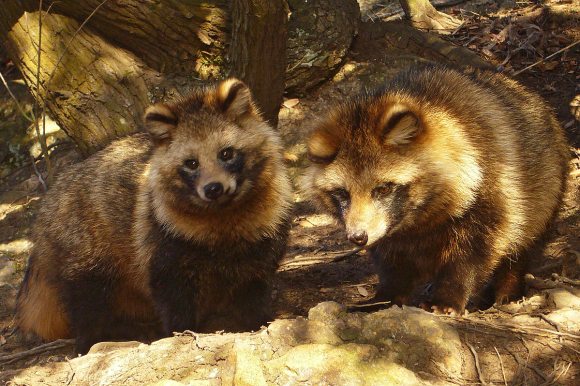
They may look similar at first glance, but the two separate species of forest critters have a handful of key differences.
Back in the fourth grade, Super Mario Bros. 3 taught me a lot of things. For example, I learned that sometimes the kid on the playground who swears his dad took a trip to Asia and brought back some awesome Nintendo game that’s not out in America yet really is telling the truth. I learned that it actually is possible for a sequel to surpass the original.
And I learned that in Japan there’s an animal called the tanuki.
As I got older and my knowledge of Japan grew, I found out that, in stark contrast to Tanooki Mario, real-life tanuki aren’t able to fly or transform into invincible statues. As a matter of fact, some of the Japanese-English dictionaries and vocabulary lists I looked at said that tanuki were just raccoons.
That translation isn’t entirely accurate, though. Tanuki are technically “raccoon dogs,” classified as members of the family Canidae, making them closer relatives to dogs, wolves, and foxes than they are to raccoons. Still, the visual similarity between tanuki and raccoons is strong enough that it can be hard to tell the two species apart, unless you’ve got a handy guide like this one.
Shared by Japanese Twitter user @namagaki0521, the side-by-side comparison shows a raccoon on the left and a tanuki on the right. The listed differences are:
● Head
Raccoon: White-edged ears, black stripe running down forehead, white whiskers
Tanuki: Black-edged ears, no forehead stripe, black whiskers
▼ Forehead stripe = racoon
● Body
Raccoon: 42-60 centimeters (16.5-23..6 inches) in length, bushy stiped tail
Tanuki: 50-60 centimeters in length, short tail with no stripes
● Legs/feet
Raccoon: Fur on legs matches color of fur on body, five digits allows for skillful gripping of objects
Tanuki: Black fur on legs, four digits (like a dog or fox)
Of course, while zoologists are familiar with these differences, many laymen, even in Japan, don’t have the discrepancies memorized. As such, it can sometimes be hard to tell if a drawing, produced by an artist instead of a naturalist, is supposed to be a tanuki or a raccoon (even Tanooki Mario mistakenly has a striped tail). So when in doubt, check for the illustrated tanuki’s unmistakable giveaway: massive balls.
Source: Twitter/@namagaki0521
Top image: Wikimedia Commons/663highland
Insert image: Wikipedia/Novil Ariandis
Follow Casey on Twitter, where as long as we’re mashing together animal names like “raccoon dog” he’d like to see a “killer whale wolf.”